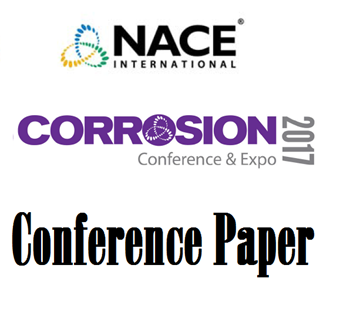Search
Conference Papers
View as
Sort by
Display
per page
Unexpected Consequence of Biocide Addition on Corrosion
Product Number:
51323-19326-SG
Publication Date:
2023
$20.00
Uniform and Localized Corrosion Study of Base Material and Welds of Ni-Cr-Mo (W) Alloys
Product Number:
51317--9406-SG
ISBN:
9406 2017 CP
Publication Date:
2017
$20.00
Uniform Corrosion Characterization of UNS N08935
Product Number:
51323-19294-SG
Publication Date:
2023
$20.00
Unique Application of an Epoxy Repair Gel to Eliminate Draft Tube Surface Wear and Cavitation, potentially Improving Turbine Power Generation Efficiency
Product Number:
41216-976-SG
Publication Date:
2016
$20.00
Unique Design and Award Selection Process (The re-painting of a 54-story building)
Product Number:
41211-648-SG
Publication Date:
2011
$20.00
Unique Rigging Applications for Suspended Scaffolds: Key Element - Safety Plans Three Key Considerations when You are Developing Your Access Safety Plan
Product Number:
41214-848-SG
Publication Date:
2014
$20.00
Unmasking AC Threats On Petrochemical Pipelines
Product Number:
51321-16817-SG
Publication Date:
2021
$20.00
Unravelling Surfactant Partitioning: Part 1 - Fundamental Theory and Modelling of Single and Multi-component Surfactant Distribution Responses
Product Number:
51324-20882-SG
Publication Date:
2024
$40.00
Unravelling Surfactant Partitioning: Part 2 - Experimental Study of Multi-Component Surfactant Partitioning Responses and Their Influence on Inhibition Performance
Product Number:
51324-20883-SG
Publication Date:
2024
$40.00
UNS N08830 – New Ni-Fe-Cr-Mo-N Super-Austenitic Alloy
Product Number:
51317--8979-SG
ISBN:
8979 2017 CP
Publication Date:
2017
$20.00
UNS N08935 – A New Versatile Grade for O&G
Product Number:
51321-16314-SG
Publication Date:
2021
$20.00
UNS N08935- A New Alloy For Seawater Applications
Product Number:
51321-16573-SG
Publication Date:
2021
$20.00














